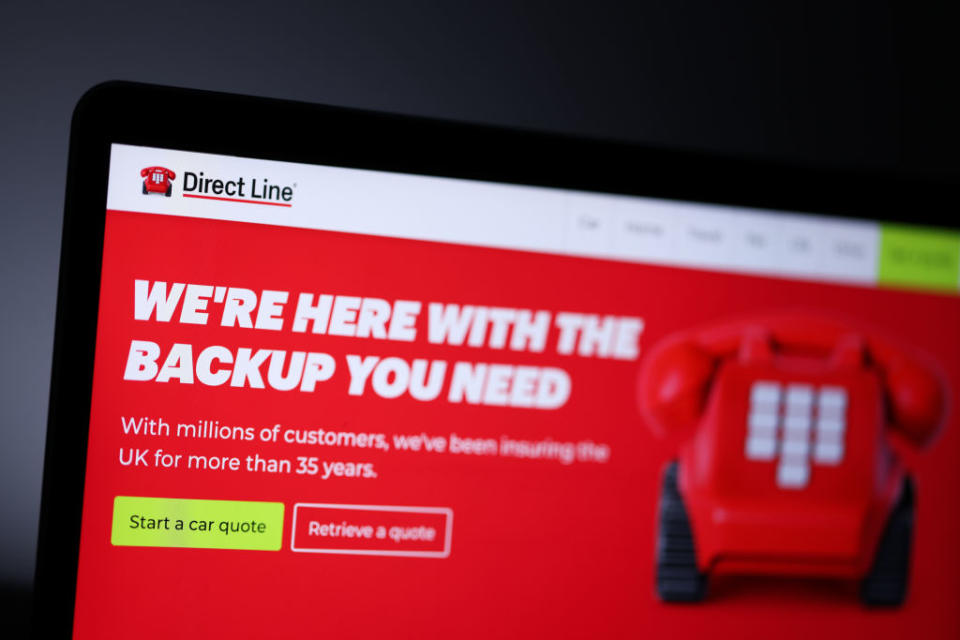Direct Line is now on price comparison sites – what does this signify?

Direct Line was the last of the great personal line insurers to resist the lure of price comparison sites.
It had even made something of a USP from its stubbornness, including it in many of its TV adverts and online marketing.
Doing so, it argued, removed the transactional interface between the brand and its customers, allowing it to maintain a closer relationship.
More sceptical observers would add that their absence from the likes of Confused.com and Go Compare also allowed the embattled FTSE 250 insurer to avoid the hefty commission that the websites carry, which has been found to range from anywhere between 18 and 25 per cent.
For years it remained one of the only main insurers to hold out from the lure of the sites, which up to 90 per cent of customers use as their first port of call when signing a new policy. Even other insurers in the Direct Line stable – including Churchill and Privilege – appear on the sites, proving the group’s flagship brand to be the exception that proved the rule.
Now, however, all that is set to change. For at its capital markets day on Wednesday, the UK’s second-largest insurer announced that Direct Line policies would begin to appear on the likes of Compare the Market and Moneysupermarket.
It said that the new leadership team had a “proven track record in delivering growth through PCWs” and that it would aid its ambition to our ambition to “rejoin the front runners in UK motor insurance and drive sustained profitable growth”.
How did we get here?
The last two years have been particularly challenging for much of the personal line insurance sector, which comprises policies in areas like motor, home or pet insurance sold to individual customers rather than businesses.
The delay between people taking out a policy and a potential claim leaves them particularly vulnerable to the type of sudden onset of inflation we saw at the end of 2022 and much of 2023.
Costs of parts and labour shot up as the industry adjusted to the economic ripples of Russia’s war on Ukraine. Combined with a spate of bad weather and people’s more adventurous habits as they arose from their lockdown slumber, it created a perfect storm: both the number of claims and the cost of covering them spiralled.
Indeed, EY estimated that for every one pound insurers received in premiums, they paid out £1.11 in claims and operating costs in 2022 and £1.14 in 2023.
But of the many personal insurance giants in the UK to have struggled through the testing operating environment of recent years, Direct Line found things especially tough.
Shares in the group, which is also home to breakdown recovery outfit Green Flag and motor insurer Darwin, collapsed over 50 per cent between February 2022 and March 2023 in response to a string of profit warnings. The stock price fell from over 300p to 137p in a year but has since recovered to 199p.
In January of last year, its board asked its then-CEO Penny James to step down having taken the reins in 2019. And the following July, the FCA ordered it to comb through five years of claims after it admitted to having underpaid some customers whose cars or vans had been written off.
Then, earlier this year, it had to shake off what it called a “highly opportunistic” megabid from Belgian underwriters Ageas valued the firm at £3.2bn.
What does it say about the insurance sector?
Insurance sector observers tend broadly to agree that many of the acute problems brought on in late 2022 have begun to subside. Underwriters have shored up their firms’ bottom lines by raising prices drastically, with the average premium up 58 per cent in 2023.
Other, more chronic issues – like the growing complexity of cars and the climate crisis’ effect on bad weather events – persist, but many of the sectors’ beasts appear to be recovering, and Direct Line is no exception.
Having already announced the sale of some of its commercial arm in September of last year, the firm announced a major cost-cutting drive in March, targeting £100m in annual savings, opening the door to a return to issuing a dividend. Its share price is up 14 per cent year to date.
What were the other changes Direct Line announced?
Along with the plan to appear on price comparison websites, Direct Line also put some more flesh on the rest of the bones of its turnaround plan, the main theme of which appears to be a return to basics.
It will concentrate investment into its main insurance lines – motor, home and Direct Line for Business commercial line – and gradually wind down its smaller pet and travel offerings.
Russ Mould, investment director at AJ Bell, said of the update: “Direct Line is finally caving in and putting its motor insurance policies on price comparison sites. This a major change for the business and a significant event.
“Direct Line is effectively saying it can no longer afford to ignore the comparison site channel. It might see an increase in customer volumes, but earnings will inevitably be lower for these policy sales. That could have a negative knock-on effect on dividend payments to shareholders.
“The company has been through the wars in recent years thanks to being caught out by unfavourable weather events which caused a spike in claims, together with cost inflation making it considerably more expensive to fix problems.
“Layer on top of a weak balance sheet and the business was knocked off course. Now it is fighting back and big decisions are having to be made, even if it means a radical change to the business model.”

 Yahoo Finance
Yahoo Finance 